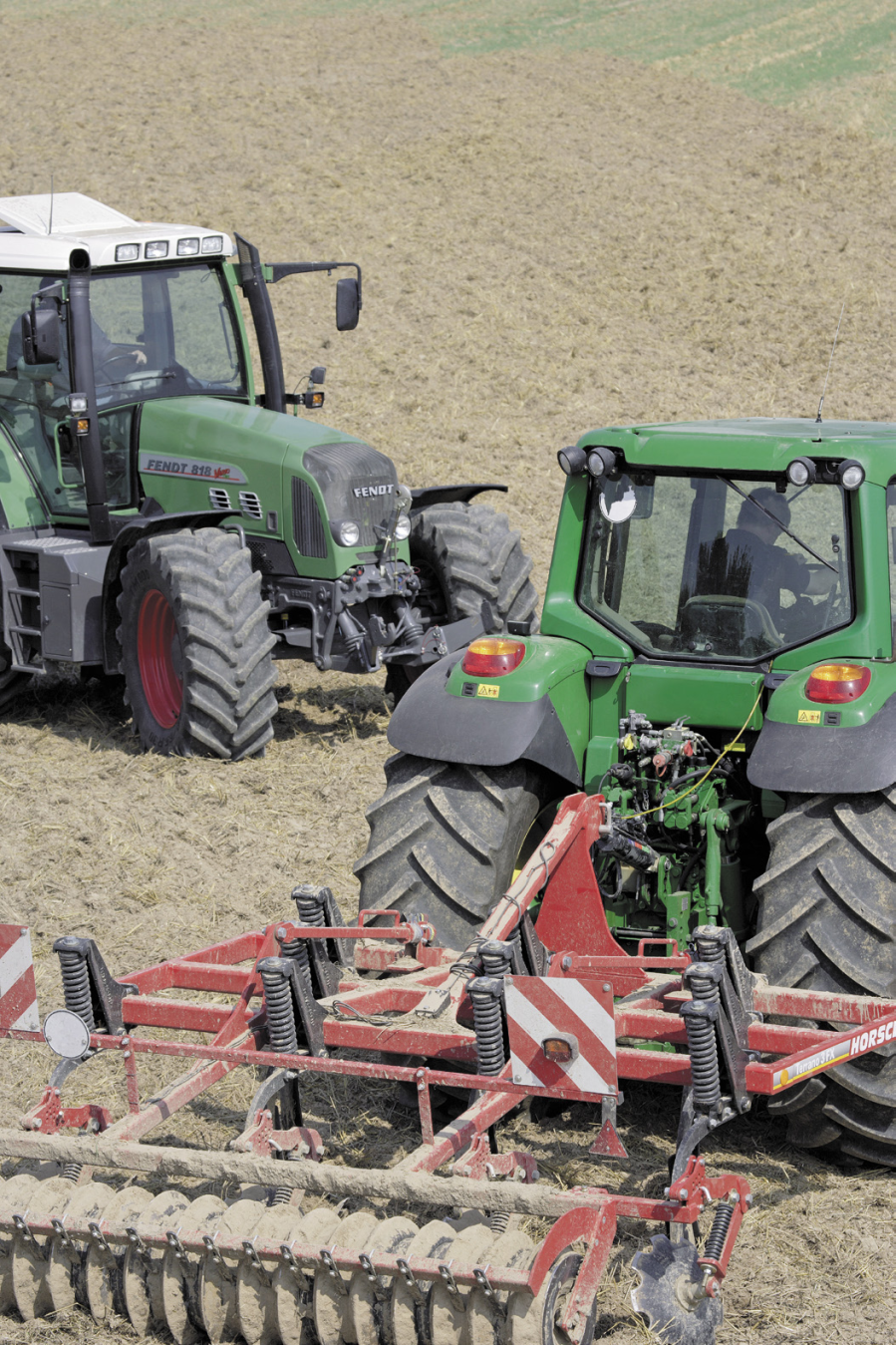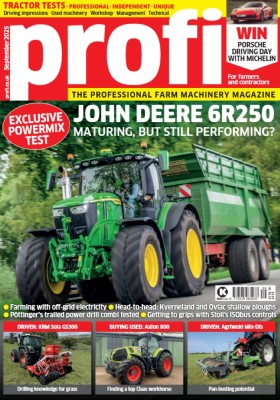Updated test procedure explained DLG PowerMix – dawn of a new tractor testing era Time zips by when you’re having tractor testing fun. It’s now two years since we introduced the new DLG brake truck, along with its innovative technology for dynamically changing the load on a moving tractor as it delivers its pull, pto and hydraulic output. Today we start to bring that new technology into our reports by launching an additional element to our test. Tagged PowerMix, this better utilises the brake truck’s full potential, and provides a more complete picture of the subject tractor’s performance.
The problem
Current tractor tests are, without doubt, a useful guide to a tractor’s ability to carry out its daily tasks. Yet the tests have one major weakness. All measurements are taken from what amounts to a stationary machine, the tractor being hooked up to the brake truck to record pto output, lift force, hydraulic output and drawbar
power. OK, so tractor drawbar power is recorded on the move but then only in isolation; that’s in three different gears at about 7.5km/hr (an OECD standard). That’s the big drawback: The individual tests are all carried out separately.
The reality, of course, is that a tractor rarely does one job at a time, spending its life turning wheels, spinning shafts and lifting/supplying oil to associated kit – simultaneously. Also, the drawbar power result, obtained at a single travel speed, again does not accurately reflect the capabilities of the modern tractor.
The idea
Dilemma explained, what could be done? Clearly the ideal is to come up with a test procedure that allows the simultaneous measurement of the drawbar power, pto and hydraulic output as well as overall tractor performance across a wider travel speed band. Better still, would be to build the above around test parameters that simulate real-life working applications.
Which – surprise, surprise – is precisely what we’ve attempted to do. The newly d veloped test performance profiles are inputted into the DLG brake truck, and comprise varying ‘percentages’ of pull, pto and hydraulic demand to reflect the requirements of particular field/transport tasks. These profiles are then scaled up
or down according to the size of tractor being tested, because a farmer obviously has very different requirements from an 80hp general-purpose machine as he does a 280hp arable lugger.
Also bear in mind that this PowerMix test better caters for the modern semi-powershift and CVT tractors.
For more up-to-date farming news and reviews click here and subscribe now to profi for just £3.99 an issue.






